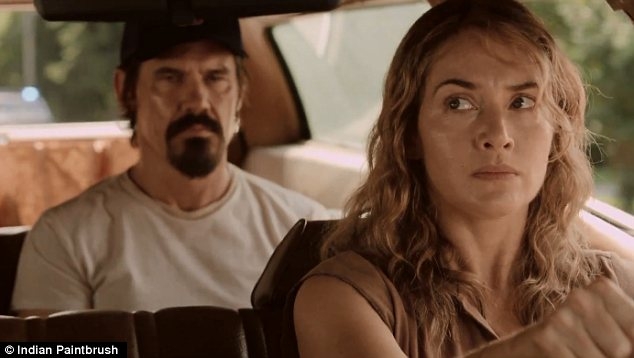If you really want to debrief after a film, use the restroom moments after the final credits. People inevitably talk about the movie as they flush the toilet and wash their hands.
On this particular matinee showing, I followed a small gaggle of older women into the restroom as the chirped and chatted about the film we had all just seen—“Labor Day.”
“It’s an old fashioned film,” one woman said. “Passionate and a little unconventional. I liked it.” The group agreed with her as they filed through the door.

While the film may want to focus on how love can bloom out of literally anything, “Labor Day” falls flat.
I, however, did not agree. I thought that the film was weird—not necessarily a “wow this is a terrible movie” kind of weird, and not even a “wow this is dumb” kind of weird. But more just an “umm, what?” kind of weird. A kind of weird that I’m not sure really worked.
The story of anxious and fragile Adele Wheeler (Kate Winslet), “Labor Day” takes place over the five days of the holiday in 1987. Adele is a mother who has gone through one too many losses in life with a 13-year-old son, Henry (Gattlin Griffith), who can’t seem to figure out his role in the family or his sexual urges.
Adele and Henry soon after the start of the film find themselves in the control of an escaped and bleeding prisoner, Frank (Josh Brolin). Running from a murder conviction, he forces Adele to allow him into her home to rest, tying her to a chair so as to help them avoid arrest for harboring a fugitive.
I would probably be terrified in such a situation—or, at the very least, a bit irritated. Adele, however, falls in love.
Thus begins the sexual tension—a kind of uncomfortable, eerie kidnapping-bondage scene to which I wasn’t sure if I should feel indignant of the undertones of sexism and dominance, or just creeped out as Frank slowly feeds Adele chili while she sits bound to the chair.
Soon, though, Frank begins to play a more familial role in the house as he hammers and fixes his way into Adele’s heart. Adele’s attitude and actions become noticeably different from the timid, anxious and depressed person we met at the start of the movie. Now, she dances the cha-cha and wears tighter clothes—her health improvements very obviously tied to the presence of a man in the house.
The sexual tension soon becomes palpable when the couple makes a pie together—a scene that is really the most memorable from the entire film, though not for very good reasons. Adele and Frank mix together the peaches and sugar in a bowl as their hands and fingers intertwine, their faces and bodies pressed together, the music pulsing softly in the background. I felt bad that Henry had to be in the kitchen at the same time as this. Heck, I felt back for the peaches.
As I cringed through the awkward moments, though, the actual kind-of-quality part of the movie came with a series of flashbacks, revealing to the audience a tragic but very real part of Frank’s past: the reason he was in jail for murder.
These flashbacks show the accidental murders of his cheating wife and his non-biological son. We also see flashbacks of Adele’s previous marriage and her several miscarriages. Together, the scenes help to create a more interesting and dynamic side to the characters which was definitely missing.
But, these insights didn’t necessarily make me feel much better about Adele falling in love in five days with a man who threatened her and her son in a grocery store.
I guess I would call this movie creepy.
Maybe that’s just me, though. The older women in the bathroom seemed to just think it was a bit “unconventional.”








